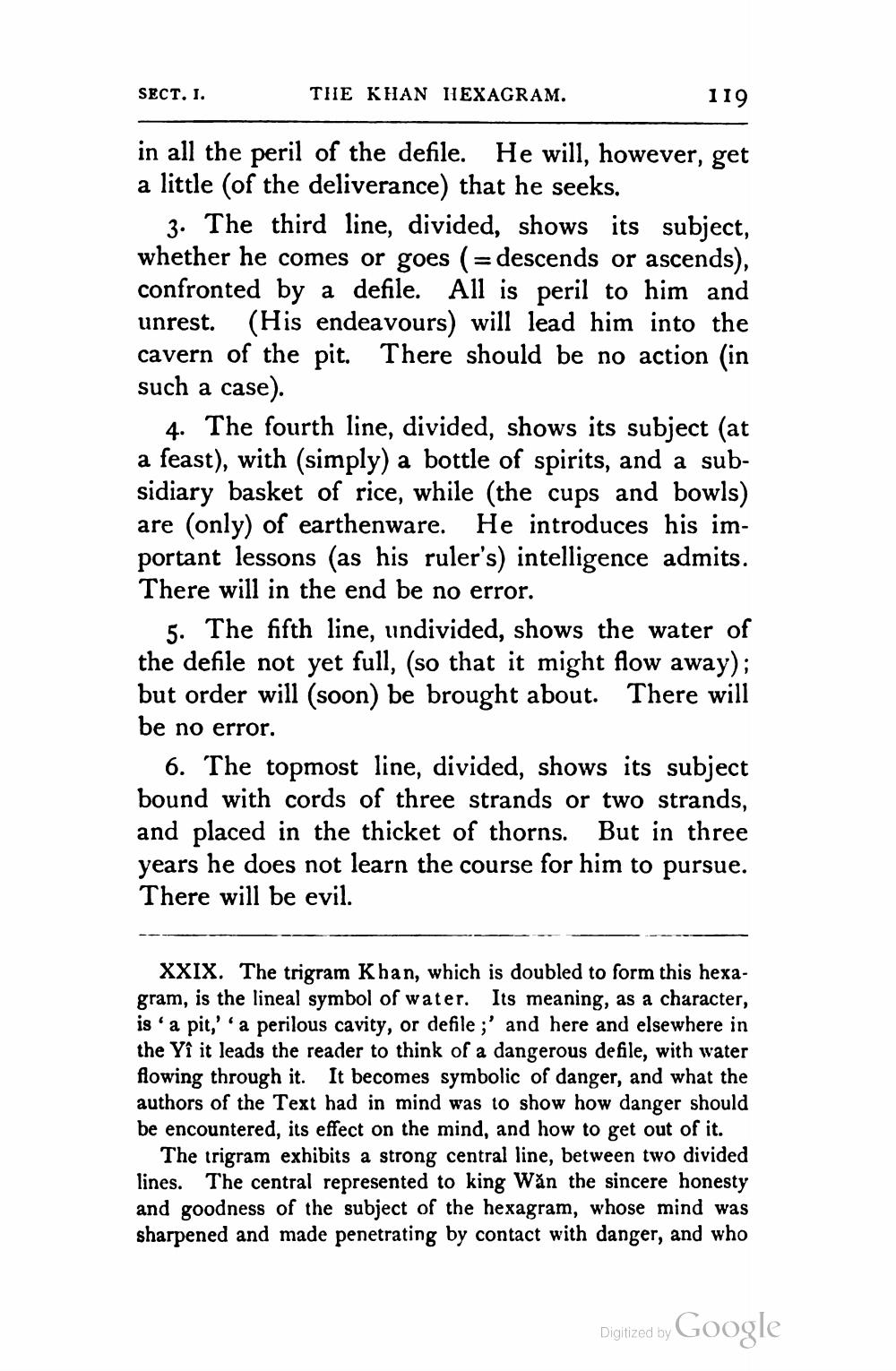________________
SECT. I.
THE KHAN HEXAGRAM.
119
in all the peril of the defile. He will, however, get a little (of the deliverance) that he seeks.
3. The third line, divided, shows its subject, whether he comes or goes (= descends or ascends), confronted by a defile. All is peril to him and unrest. (His endeavours) will lead him into the cavern of the pit. There should be no action (in such a case).
4. The fourth line, divided, shows its subject (at a feast), with (simply) a bottle of spirits, and a subsidiary basket of rice, while (the cups and bowls) are (only) of earthenware. He introduces his important lessons (as his ruler's) intelligence admits. There will in the end be no error.
5. The fifth line, undivided, shows the water of the defile not yet full, (so that it might flow away); but order will (soon) be brought about. There will be no error.
6. The topmost line, divided, shows its subject bound with cords of three strands or two strands, and placed in the thicket of thorns. But in three years he does not learn the course for him to pursue. There will be evil.
XXIX. The trigram Khan, which is doubled to form this hexagram, is the lineal symbol of water. Its meaning, as a character, is 'a pit,' 'a perilous cavity, or defile;' and here and elsewhere in the Yî it leads the reader to think of a dangerous defile, with water flowing through it. It becomes symbolic of danger, and what the authors of the Text had in mind was to show how danger should be encountered, its effect on the mind, and how to get out of it.
The trigram exhibits a strong central line, between two divided lines. The central represented to king Wăn the sincere honesty and goodness of the subject of the hexagram, whose mind was sharpened and made penetrating by contact with danger, and who
Digitized by
Google




